Keywords
|
| B&R PLC, Water, Recycling, Water Filtration and Recycling System, B&R Automation Studio HMI, PLC |
INTRODUCTION
|
| Water contamination is a meticulous problem before today’s world. Considering the rate of increasing population, delivering pure water to each individual is a major challenge. The main source of contamination of the fresh water resources is the unprocessed water flowing into them from various industries for example Textile and Paper mills, Sugar mills, pharmaceutical companies, Automobile companies, chocolate/beverage companies etc. |
| The main idea behind the project is simple. Using the filtration processes used in domestic practices and combining them with the technology to automate the whole process. Hence the total process requires neither great manpower nor high cost. |
EXISTING METHODS
|
| One of the options available is the use of ultraviolet water treatment systems. UV radiation purifies the water without adding undesirable colour, odour, chemicals or taste - and there are no residual by-products. It is fast, effective, efficient and environmentally friendly. |
| The typical locations within a beverage water system where UV equipment may be installed for disinfection are the post-carbon filter and pre/post-RO. |
| Ozone is commonly used in the industry to sanitize storage tanks, vessels, piping and auxiliary equipment such as pumps and valves in order to eliminate bacteria. The residual ozone needs to be destroyed prior to point-of-use to ensure product quality. UV technology is the technology of choice for this application since it provides instant results without the complications of chemical additives and the by-products they leave behind. The size of the UV equipment required to completely destroy the residual ozone present in a water stream depends on the flow rate, ozone concentration, quality of the feed water and the temperature of the water stream. |
| Capital costs vary for the system configurations and technologies used. Paul Greene, Global Director - Food & Beverage Industry of Siemens Water Technologies says that depending on water quality coming in, the purity required and the level of sophistication of the equipment desired (plastic vs. stainless steel piping) prices can range from about $1500 per gpm up to $3000, excluding installation costs. |
PROPOSED MODEL AND WORKING
|
| When I/P_valve is opened the water to be filtered and recycled is let into the input water storage tank. Water in the storage tank is tested for temperature & acidity using thermocouple & pH sensor respectively. |
| If temperature exceeds the set value the water is held in the tank until it cools down to the desired temperature. If the acidity or basicity of water is not within the set range of (6-8) pH the water is drained out of the system. This water can then be neutralized using separate processes & reintroduced back in the system. |
| If water passes all the tests the store_valve is opened & the water is let into the mixing tank. Fixed amount of alum powder is poured into the mixing tank by opening the alum_valve for a specified amount of time. A stirrer is then turned ON for specific time to mix the alum powder into the water. After the time elapses the stirrer is turned OFF & solid waste is allowed to settle down in the tank. |
| The mix_valve is turned ON to let the water above a specified level is let into the Bio-Sand Filter for further filtration. Waste_valve is turned ON to drop the solid waste into solid waste outlet tank. This solid waste can be processed further & used for various purposes. |
| In Bio-Sand filter the water passes through five layers of sand having varying coarseness. The bio-sand filter removes minute solid waste & various pathogens from the water. |
| The flow sensor is used to monitor the flow rate of water outputted from the filter. If rate reduces it means the filter is choked & is to be replaced. This message will be displayed on HMI (Human Machine Interface) screen present on the PLC. |
| The filtered water is collected in the final storage tank. This water then can be used for non-drinking purposes. If the water is to be used for drinking purposes it has to be further disinfected. |
BIO-SAND FILTER
|
| The bio-sand filter (BSF) is an adaptation of the traditional slow sand filter, which has been used for community water treatment for almost 200 hundred years. The bio-sand filter is smaller and adapted for intermittent use, making it suitable for households. The filter container can be made of concrete or plastic and is filled with layers of specially selected and prepared sand and gravel. |
A. Working of Bio-Sand Filter (BSF)
|
| The bio-sand filter has five distinct zones: |
| 1) Inlet reservoir zone, 2) Standing water zone, 3) Biological zone, 4) Non-biological zone, and 5) Gravel zone. |
| Pathogens and suspended solids are removed through a combination of biological and physical processes that take place in the bio layer and within the sand layer. These processes include: mechanical trapping, predation, adsorption, and natural death. |
| • Mechanical trapping - Suspended solids and pathogens are physically trapped in the spaces between the sand grains. |
| • Predation - Pathogens are consumed by other microorganisms in the bio layer. |
| • Adsorption - Pathogens become attached to each other, suspended solids in the water, and the sand grains. |
| • Natural death - Pathogens finishes their life cycle or dies because there is not enough food or oxygen for them to survive. |
B. Disinfection of Water
|
| Although the water may look clear after filtration, it is still necessary to disinfect it to ensure the best water quality possible. The bio sand filter removes most, but not all of the bacteria and viruses. The most common methods used around the world to disinfect drinking water are: |
| • Chlorine disinfection |
| • Solar disinfection (SODIS) |
| • Solar pasteurization |
| • Ultraviolet (UV) disinfection |
| • Boiling |
| When water has high levels of turbidity, pathogens “hide” behind the suspended solids and are difficult to kill using chemical, SODIS and UV disinfection. The bio sand filter reduces the turbidity and is a necessary step to improve the effectiveness of these disinfection methods. |
HARDWARE IMPLEMENTATION
|
A. Input Devices –
|
| 1) Level Switch: Level sensor is used to determine the level of water filled in the tanks. These are used to prevent water spilling over & underflow. |
| 2) Flow Sensor: Flow sensor is used to detect flow of water through the pipe. Total volume of flow is calculated by measuring the frequency of the pulses, not the number of pulses. A mathematical equation is used to convert the frequency into a flow rate. |
| 3) pH Sensor: For determining the traces of acidity or basicity present in the water, we are using pH sensor. We are using pH glass electrode for measurement of pH of the water. |
B. Output Devices –
|
| 1) DC Motor: In our project we are using DC motor to mix the alum powder properly in the water. The internal configuration of a DC motor is designed to harness the magnetic interaction between a currentcarrying conductor and an external magnetic field to generate rotational motion. |
| 2) Solenoid Valves: Solenoid valves are going to be used to control water flow between stages. The valve shown in the picture is a normally-closed, direct-acting valve. |
SYSTEM FLOW CHART
|
CONCLUSION
|
| In this paper we presented how a cost effective system for water filtration & recycling can be easily implemented by combining different techniques. The total system can be easily implemented using PLCs already present in the industries thus minimizing the cost even more. This system can also be used in housing societies for recycling the grey water. |
ACKNOWLEDGMENT
|
| We thank our teachers for their continuous support and encouragement in this work, for cultivating new and aspiringideas in our mind. We would especially thank Mrs. Rupali S. Kad for guiding through the process and being availablefor any problem faced. |
Tables at a glance
|
 |
 |
| Table 1 |
Table 2 |
|
| |
Figures at a glance
|
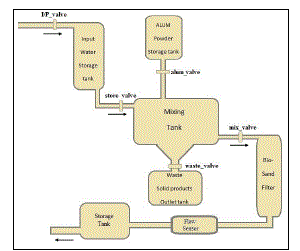 |
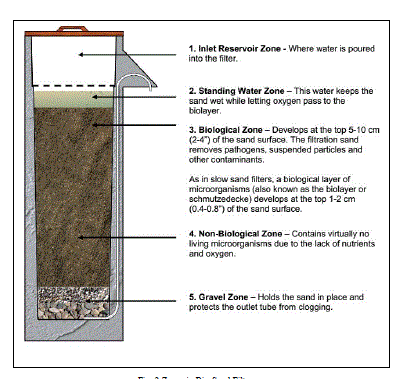 |
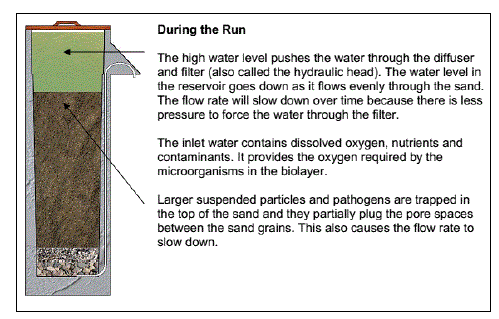 |
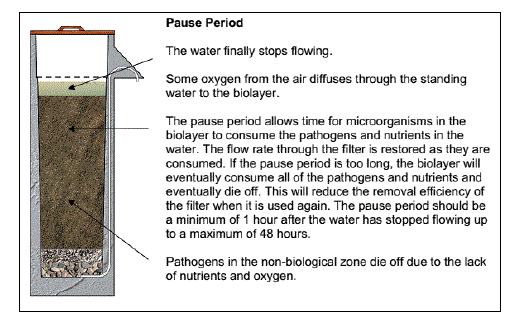 |
| Figure 1 |
Figure 2 |
Figure 3 |
Figure 4 |
|
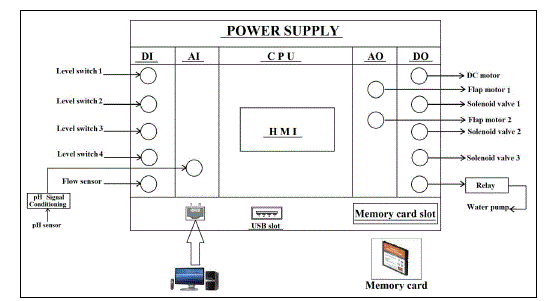 |
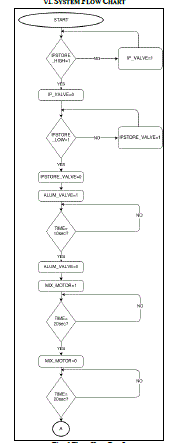 |
 |
| Figure 5 |
Figure 6 |
Figure 7 |
|
| |
References
|
- Centre for Affordable Water and Sanitation Technology,Bio Sand Filter construction manual, Available at: http://www.cawst.org/assets/File/Biosand_Filter_%20Manual_Version_10_No_Appendices_Sep09.pdf
- Anjal Prakash, Medhavi Sharma and Jayati Chourey ,“Water in India : Situations and Prospects”, UNICEF, FAO, SaciWATERs,pp.16-105, 2013
- Georg Frey and LotharLitz, “Formal Methods in PLC Programming”,IEEE Conference on Systems Man and Cybernetics SMC 2000,pp.1-4, 2000.
|